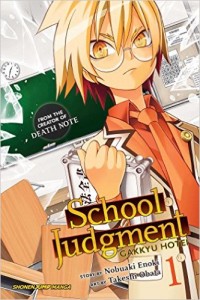Skip Beat Volume 36 by Yoshiki Nakamura
I feel like most reviews of Skip Beat could just be summed up as, “Skip Beat, long-running shoujo series, continues to be relentlessly excellent,” but as I was reading the latest volume there were several specific things that struck me about it. I absolutely loved the Heel siblings plot, and while the manga has to move on from Ren and Kyoko being forced to be in close proximity to each other as they pretend to be gothic semi-incestual siblings in order to further Ren’s acting career as he acts in a drama while pretending to be an entirely different actor than “Ren” which is itself a totally different persona from his genuine personality, I’m glad that this volume eases out of the story line gently, with Kyoko getting one last big scene as Setsu.
Early in this volume I was reminded at how good Nakamura is at drawing Kyoko in freak-out mode, as she suffers agony in telling Ren that she kissed her long-lost fairy prince Corn (who is also Ren). Ren is pushing Kyoko a bit to get an emotional reaction from her, but he also is genuinely grateful for her help as they part and she heads back to Japan to resume her own acting career. Kyoko has matured so much as an actress and a person, and while she’s handling a crisis on her new show, things get complicated fast when Sho visits her home.
A settled and stable shoujo heroine doesn’t make for much drama, and now in addition to Sho’s reappearance, Kyoko is confronted with the specter of her long-absent horrible mother. Just when she starts to get a bit of emotional equilibrium, something happens to throw things off!
Lettering Skip Beat! must be a fun and challenging job, as there are different fonts used for Kyoko when she’s beset by the angry demon side of her personality, when she’s yelling at Sho, and when she’s calmly giving advice to a fellow actress. All in all, this was a very entertaining volume helping Skip Beat! transition away from one story line into a new direction, and I’m looking forward to seeing what happens next.





Recent Comments